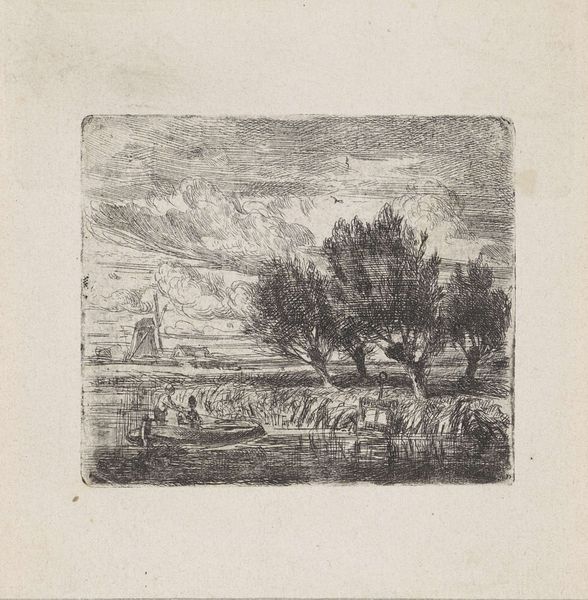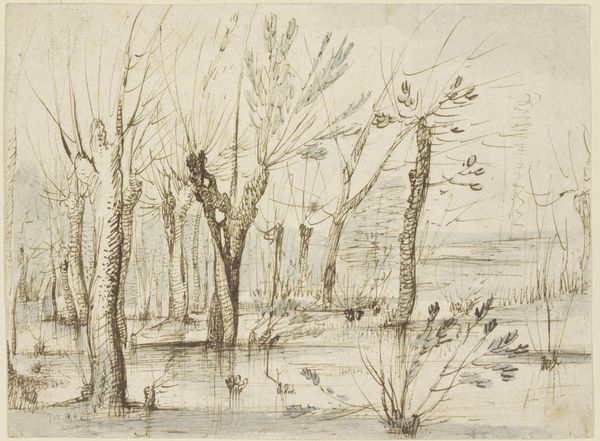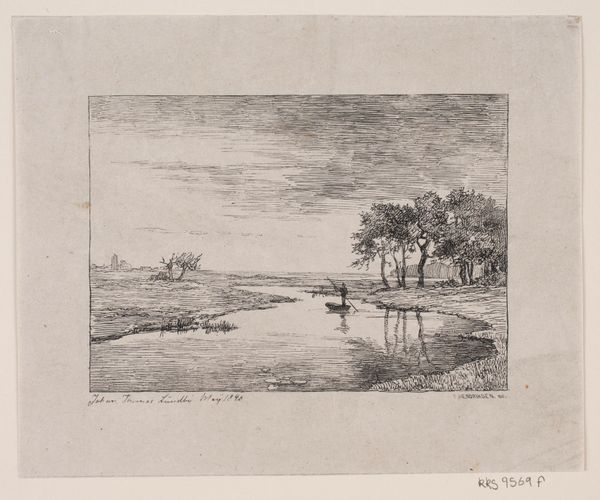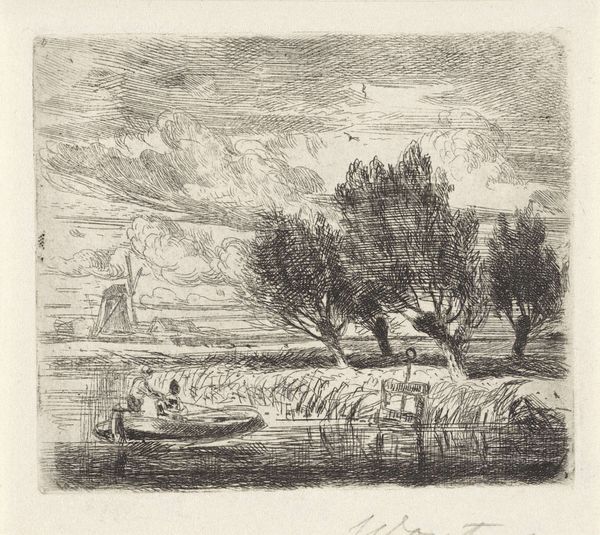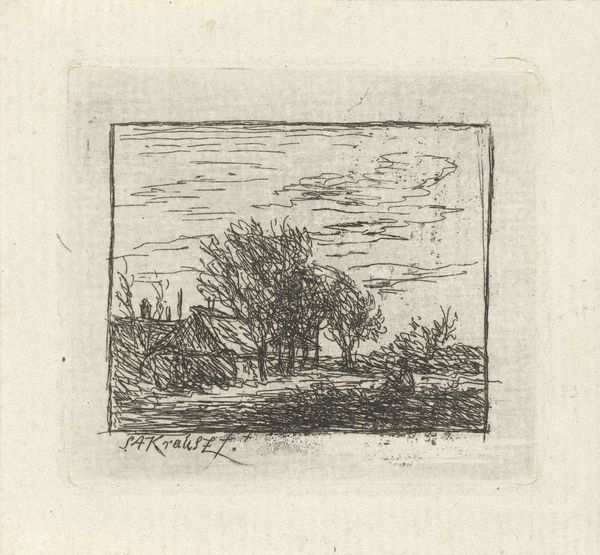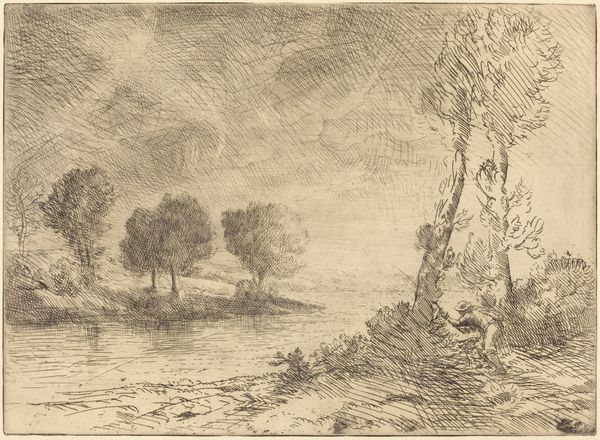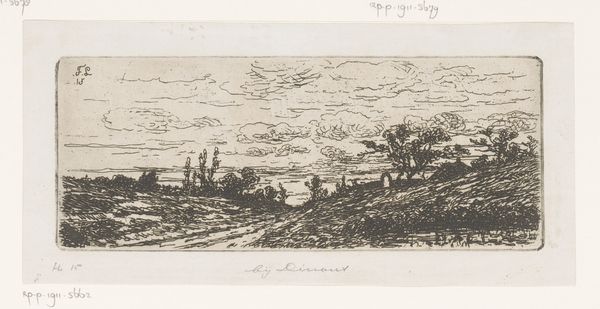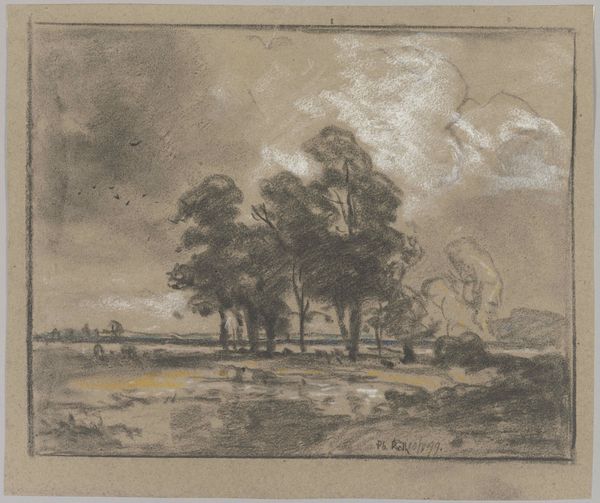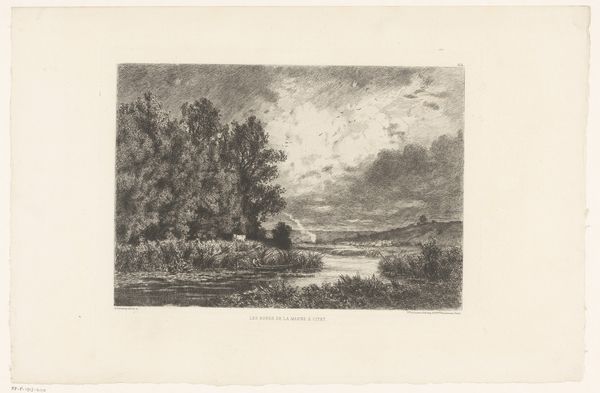
Dimensions: height 74 mm, width 86 mm
Copyright: Rijks Museum: Open Domain
Editor: Here we have "Knotwilgen aan de waterkant," or "Pollard Willows on the Waterfront," an etching made by Augustinus Jacobus Bernardus Wouters, sometime between 1839 and 1886. The wispy lines and muted tones create such a tranquil, almost melancholic, atmosphere. What stands out to you in this piece? Curator: This etching, created during a time of significant political and social upheaval in Europe, presents an interesting perspective on the Dutch landscape tradition. How do you think the choice to depict this idyllic scene connects with the historical context? Editor: That’s interesting; I hadn't considered the historical backdrop. It almost feels like a deliberate contrast, seeking refuge in nature amidst the turbulence? Curator: Precisely. During the 19th century, the rise of industrialization and urbanization drastically altered the relationship between people and the environment. Landscape art, like this etching, became a vehicle for expressing anxieties and nostalgia related to these changes. It idealizes a rural past. Look at the presence of the windmill in the distance - what kind of association would that hold at this time? Editor: Right! A windmill evokes tradition and a slower pace of life, very different from factories. So, choosing these elements emphasizes a longing for a simpler, pre-industrial world? Curator: Indeed. It also highlights the public role of art. Through widespread prints like these, artists helped to shape cultural perceptions of the landscape and the idealized values attached to it. How do you think institutions like the Rijksmuseum continue to shape the perception of pieces like these? Editor: Museums preserve these works, solidifying their cultural importance and contributing to a shared national identity, but also framing them in ways that highlight specific narratives. It all affects the way we perceive this once private sentiment. Curator: Exactly, an artwork isn't made in a vacuum! Seeing this piece now with the lens of its history, and social impact has opened a new point of appreciation for the scene! Editor: Definitely! Understanding the forces at play during its creation adds another layer of richness.
Comments
No comments
Be the first to comment and join the conversation on the ultimate creative platform.

